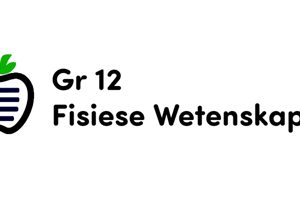Podcast
Questions and Answers
What is the defining characteristic of an exothermic reaction?
What is the defining characteristic of an exothermic reaction?
- The enthalpy change (ΔH) is positive.
- The temperature of the surroundings decreases.
- The system absorbs energy from the surroundings.
- The system releases energy to the surroundings. (correct)
What is the sign of the enthalpy change (ΔH) in an endothermic reaction?
What is the sign of the enthalpy change (ΔH) in an endothermic reaction?
- ΔH can be either positive or negative.
- ΔH is positive. (correct)
- ΔH is zero.
- ΔH is negative.
Which of the following is an example of an endothermic reaction?
Which of the following is an example of an endothermic reaction?
- Combustion of methane.
- Photosynthesis. (correct)
- Neutralization of an acid and a base.
- Condensation of water vapor.
How does the temperature of the surroundings change during an exothermic reaction?
How does the temperature of the surroundings change during an exothermic reaction?
What is the graphical representation of an endothermic reaction?
What is the graphical representation of an endothermic reaction?
Which of the following is NOT a characteristic of an endothermic reaction?
Which of the following is NOT a characteristic of an endothermic reaction?
Which type of reaction emits energy into the surroundings?
Which type of reaction emits energy into the surroundings?
What is the main difference between exothermic and endothermic reactions?
What is the main difference between exothermic and endothermic reactions?
Which type of reaction is often used for heating purposes or as energy sources?
Which type of reaction is often used for heating purposes or as energy sources?
What can affect the rate at which equilibrium is reached in a closed system?
What can affect the rate at which equilibrium is reached in a closed system?
Which field of study focuses on understanding reaction spontaneity and energy transfer in chemical processes?
Which field of study focuses on understanding reaction spontaneity and energy transfer in chemical processes?
In which type of reaction does the environment around it become cooler?
In which type of reaction does the environment around it become cooler?
What does a negative ΔH value indicate?
What does a negative ΔH value indicate?
Which type of reaction requires external energy sources like heat or light?
Which type of reaction requires external energy sources like heat or light?
In an exothermic reaction, the energy level of the products compared to the reactants is:
In an exothermic reaction, the energy level of the products compared to the reactants is:
What is the characteristic of endothermic reactions related to temperature?
What is the characteristic of endothermic reactions related to temperature?
What kind of reaction is photosynthesis considered?
What kind of reaction is photosynthesis considered?
Which type of reaction requires cooling systems in industrial settings?
Which type of reaction requires cooling systems in industrial settings?
What is the key factor that differentiates exothermic from endothermic reactions?
What is the key factor that differentiates exothermic from endothermic reactions?
In which type of reaction are safety risks associated with sudden heat release?
In which type of reaction are safety risks associated with sudden heat release?
In terms of energy, what happens in an endothermic reaction?
In terms of energy, what happens in an endothermic reaction?
What type of reactions are more common in nature and industrial processes?
What type of reactions are more common in nature and industrial processes?
Which of the following best describes the direction of energy flow in an exothermic reaction?
Which of the following best describes the direction of energy flow in an exothermic reaction?
How does the temperature of the surroundings change during an endothermic reaction?
How does the temperature of the surroundings change during an endothermic reaction?
Which of the following is NOT a practical application of exothermic reactions?
Which of the following is NOT a practical application of exothermic reactions?
How does the position of equilibrium in a closed system differ between exothermic and endothermic reactions?
How does the position of equilibrium in a closed system differ between exothermic and endothermic reactions?
What is a key characteristic of endothermic reactions related to temperature?
What is a key characteristic of endothermic reactions related to temperature?
Which of the following fields of study focuses on understanding the spontaneity and energy transfer in chemical processes?
Which of the following fields of study focuses on understanding the spontaneity and energy transfer in chemical processes?
Which of the following is NOT a characteristic of an endothermic reaction?
Which of the following is NOT a characteristic of an endothermic reaction?
What does a negative value of ΔH indicate about a chemical reaction?
What does a negative value of ΔH indicate about a chemical reaction?
Which of the following is a key factor that differentiates exothermic from endothermic reactions?
Which of the following is a key factor that differentiates exothermic from endothermic reactions?
Which type of reaction is typically used for heating purposes or as energy sources?
Which type of reaction is typically used for heating purposes or as energy sources?
What is the graphical representation of an endothermic reaction?
What is the graphical representation of an endothermic reaction?
Which type of reaction is associated with sudden heat release and poses safety risks?
Which type of reaction is associated with sudden heat release and poses safety risks?
What is the sign of the enthalpy change (ΔH) in an endothermic reaction?
What is the sign of the enthalpy change (ΔH) in an endothermic reaction?
Which type of reaction requires external energy sources like heat or light to proceed?
Which type of reaction requires external energy sources like heat or light to proceed?
What is the defining characteristic of an exothermic reaction?
What is the defining characteristic of an exothermic reaction?
How does the temperature of the surroundings change during an exothermic reaction?
How does the temperature of the surroundings change during an exothermic reaction?
What is the sign of the enthalpy change (H) in an endothermic reaction?
What is the sign of the enthalpy change (H) in an endothermic reaction?
Which of the following is a characteristic of an endothermic reaction?
Which of the following is a characteristic of an endothermic reaction?
What is the graphical representation of an endothermic reaction?
What is the graphical representation of an endothermic reaction?
Which type of reaction is often used for heating purposes or as energy sources?
Which type of reaction is often used for heating purposes or as energy sources?
What is the defining characteristic of an exothermic reaction?
What is the defining characteristic of an exothermic reaction?
Which type of reaction is photosynthesis considered?
Which type of reaction is photosynthesis considered?
Which type of reaction requires external energy sources like heat or light to proceed?
Which type of reaction requires external energy sources like heat or light to proceed?
Which of the following is the correct graphical representation of an endothermic reaction?
Which of the following is the correct graphical representation of an endothermic reaction?
What is the defining characteristic of an exothermic reaction?
What is the defining characteristic of an exothermic reaction?
What is the sign of the enthalpy change (ΔH) in an endothermic reaction?
What is the sign of the enthalpy change (ΔH) in an endothermic reaction?
Which type of reaction is often used for heating purposes or as energy sources?
Which type of reaction is often used for heating purposes or as energy sources?
In which field of study does the understanding of reaction spontaneity and energy transfer in chemical processes play a crucial role?
In which field of study does the understanding of reaction spontaneity and energy transfer in chemical processes play a crucial role?
What is the key factor that differentiates exothermic from endothermic reactions?
What is the key factor that differentiates exothermic from endothermic reactions?
Which type of reaction is typically used for heating purposes or as energy sources?
Which type of reaction is typically used for heating purposes or as energy sources?
How does the rate of reaching equilibrium and the position of equilibrium in a closed system differ between exothermic and endothermic reactions?
How does the rate of reaching equilibrium and the position of equilibrium in a closed system differ between exothermic and endothermic reactions?
Which field of study focuses on understanding the spontaneity and energy transfer in chemical processes?
Which field of study focuses on understanding the spontaneity and energy transfer in chemical processes?
What is the sign of the enthalpy change (ΔH) in an endothermic reaction?
What is the sign of the enthalpy change (ΔH) in an endothermic reaction?
Which type of reaction is photosynthesis considered?
Which type of reaction is photosynthesis considered?
Which type of reaction involves the absorption of energy from the surroundings into the system?
Which type of reaction involves the absorption of energy from the surroundings into the system?
In which type of reaction, do product molecules form at a lower energy level than reactants, releasing excess energy?
In which type of reaction, do product molecules form at a lower energy level than reactants, releasing excess energy?
Which characteristic is a defining feature of exothermic reactions?
Which characteristic is a defining feature of exothermic reactions?
What is the main purpose of cooling systems in industrial settings regarding exothermic reactions?
What is the main purpose of cooling systems in industrial settings regarding exothermic reactions?
Which process involves solar energy absorption and conversion into chemical energy?
Which process involves solar energy absorption and conversion into chemical energy?
What does a negative ΔH value indicate for a chemical reaction?
What does a negative ΔH value indicate for a chemical reaction?
Which type of reaction poses safety risks due to sudden heat release and requires careful safety protocols?
Which type of reaction poses safety risks due to sudden heat release and requires careful safety protocols?
In which type of reaction are external energy sources like heat or light typically required to proceed?
In which type of reaction are external energy sources like heat or light typically required to proceed?
What is the significance of temperature drop in endothermic reactions?
What is the significance of temperature drop in endothermic reactions?
Which field benefits significantly from understanding exothermic and endothermic reactions?
Which field benefits significantly from understanding exothermic and endothermic reactions?
What happens to the temperature of the surroundings in an endothermic reaction?
What happens to the temperature of the surroundings in an endothermic reaction?
Which type of reaction requires energy intake to break the bonds of reactants?
Which type of reaction requires energy intake to break the bonds of reactants?
What is the energy change (ΔH) for exothermic reactions?
What is the energy change (ΔH) for exothermic reactions?
In exothermic reactions, what happens to the temperature of the surroundings?
In exothermic reactions, what happens to the temperature of the surroundings?
What is a key characteristic of exothermic reactions related to bond formation?
What is a key characteristic of exothermic reactions related to bond formation?
Which type of reaction results in a net energy gain within the system?
Which type of reaction results in a net energy gain within the system?
Which of the following statements accurately describes the relationship between exothermic reactions and the environment?
Which of the following statements accurately describes the relationship between exothermic reactions and the environment?
In the context of chemical equilibrium, how do exothermic and endothermic reactions differ in their behavior?
In the context of chemical equilibrium, how do exothermic and endothermic reactions differ in their behavior?
Which of the following statements accurately represents the energy flow in an endothermic reaction?
Which of the following statements accurately represents the energy flow in an endothermic reaction?
Which of the following fields of study is primarily concerned with the study of exothermic and endothermic reactions?
Which of the following fields of study is primarily concerned with the study of exothermic and endothermic reactions?
Which of the following statements accurately describes the relationship between exothermic reactions and practical applications?
Which of the following statements accurately describes the relationship between exothermic reactions and practical applications?
Which of the following processes is an example of an endothermic reaction?
Which of the following processes is an example of an endothermic reaction?
In a closed system at equilibrium, how does the position of equilibrium shift when energy is supplied for an endothermic reaction?
In a closed system at equilibrium, how does the position of equilibrium shift when energy is supplied for an endothermic reaction?
Which of the following statements is NOT true regarding the graphical representation of exothermic and endothermic reactions?
Which of the following statements is NOT true regarding the graphical representation of exothermic and endothermic reactions?
Which of the following is NOT a characteristic of an exothermic reaction?
Which of the following is NOT a characteristic of an exothermic reaction?
Which of the following statements best describes the relationship between the enthalpy change (ΔH) and the spontaneity of a reaction?
Which of the following statements best describes the relationship between the enthalpy change (ΔH) and the spontaneity of a reaction?
In an industrial setting, which of the following scenarios would require the implementation of cooling systems to manage excess heat release?
In an industrial setting, which of the following scenarios would require the implementation of cooling systems to manage excess heat release?
Which of the following statements accurately describes the relationship between the enthalpy change (ΔH) and the energy required to initiate a reaction?
Which of the following statements accurately describes the relationship between the enthalpy change (ΔH) and the energy required to initiate a reaction?
In a chemical reaction, which of the following factors primarily determines whether the reaction is exothermic or endothermic?
In a chemical reaction, which of the following factors primarily determines whether the reaction is exothermic or endothermic?
Which of the following scenarios would result in an exothermic reaction?
Which of the following scenarios would result in an exothermic reaction?
In a closed system at equilibrium, how does the position of equilibrium shift when energy is removed from an exothermic reaction?
In a closed system at equilibrium, how does the position of equilibrium shift when energy is removed from an exothermic reaction?
Which of the following statements accurately describes the relationship between the enthalpy change (ΔH) and the entropy change (ΔS) in determining the spontaneity of a reaction?
Which of the following statements accurately describes the relationship between the enthalpy change (ΔH) and the entropy change (ΔS) in determining the spontaneity of a reaction?
What is the sign of the enthalpy change (ΔH) in an endothermic reaction?
What is the sign of the enthalpy change (ΔH) in an endothermic reaction?
Which type of reaction is photosynthesis considered?
Which type of reaction is photosynthesis considered?
What is the defining characteristic of an exothermic reaction?
What is the defining characteristic of an exothermic reaction?
In an exothermic reaction, the energy level of the products compared to the reactants is:
In an exothermic reaction, the energy level of the products compared to the reactants is:
Which type of reaction is often used for heating purposes or as energy sources?
Which type of reaction is often used for heating purposes or as energy sources?
What is the main purpose of cooling systems in industrial settings regarding exothermic reactions?
What is the main purpose of cooling systems in industrial settings regarding exothermic reactions?
Which type of reaction is characterized by the release of energy into the surroundings?
Which type of reaction is characterized by the release of energy into the surroundings?
What does a positive value of ΔH indicate about a chemical reaction?
What does a positive value of ΔH indicate about a chemical reaction?
Which of the following is a characteristic of endothermic reactions?
Which of the following is a characteristic of endothermic reactions?
Which type of reaction is typically used for heating purposes or as energy sources?
Which type of reaction is typically used for heating purposes or as energy sources?
What is the graphical representation of an exothermic reaction?
What is the graphical representation of an exothermic reaction?
Which type of reaction typically requires external energy sources like heat or light to proceed?
Which type of reaction typically requires external energy sources like heat or light to proceed?
What is the sign of the enthalpy change (ΔH) in an exothermic reaction?
What is the sign of the enthalpy change (ΔH) in an exothermic reaction?
Which of the following is an example of an endothermic reaction?
Which of the following is an example of an endothermic reaction?
What is the main purpose of cooling systems in industrial settings regarding exothermic reactions?
What is the main purpose of cooling systems in industrial settings regarding exothermic reactions?
Which field of study is primarily concerned with the study of exothermic and endothermic reactions?
Which field of study is primarily concerned with the study of exothermic and endothermic reactions?
Which of the following is an example of an exothermic reaction?
Which of the following is an example of an exothermic reaction?
What happens to the rate of reaching equilibrium and the position of equilibrium in a closed system for exothermic and endothermic reactions?
What happens to the rate of reaching equilibrium and the position of equilibrium in a closed system for exothermic and endothermic reactions?
Which field of study is primarily concerned with understanding the energy transfer and spontaneity of exothermic and endothermic reactions?
Which field of study is primarily concerned with understanding the energy transfer and spontaneity of exothermic and endothermic reactions?
In which direction does energy flow in an exothermic reaction?
In which direction does energy flow in an exothermic reaction?
Which of the following is a practical application of exothermic reactions?
Which of the following is a practical application of exothermic reactions?
How does the temperature of the surroundings change during an endothermic reaction?
How does the temperature of the surroundings change during an endothermic reaction?
Flashcards are hidden until you start studying




